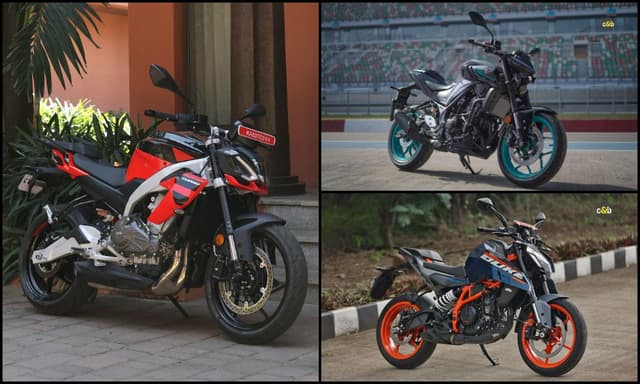How To Get Your Two-Wheeler Monsoon Ready

Highlights
- Here are a few tips to get your two-wheeler ready for the Monsoon
- Getting an anti-rust treatment is a good place to start
- Check the tyre tread, electricals and overall health of your two-wheeler
The Monsoon is a great occasion for riding. Rain-laden clouds, lush greenery all around and pitter-patter of raindrops! But along with the dopamine rush, comes muck, rust and a whole bunch of other problems for your beloved two-wheeler. Avoiding the Monsoon is well, unavoidable, but one can always be prepared for it. So, here are a few tips that can help you get your two-wheeler Monsoon ready.

- Scheduled Maintenance
The first thing to do is to get your vehicle a scheduled service. Most OEMs will take care of getting your two-wheeler ready for the monsoon while getting it serviced at little to no extra cost. But, in case the scheduled service does not align with the monsoon, just enrol yourself in a pre-monsoon check-up camp. Most manufacturers do it and also offer discounts on the actual service and few monsoon essentials as well. Get the spark-plugs checked, bleed the brake lines, check all the plugs and seals and the levels of all the fluids.

- Inspecting Wiring & Electronics
It is good idea to inspect the wiring and electrical parts on your two-wheeler. Make sure all lights, switches, bulbs and indicators are in working order. Replace and repair any parts that aren't working. It's also advisable to wash your two-wheeler regularly to remove the build-up of dirt from several areas.

- Get Anti-Rust Treatment
The exposed metal parts of your two-wheeler are likely to catch rust during the rains and while it may be seem inevitable, one can always use an anti-rust solution like WD-40 or some other treatment to offer as much protection as possible to your vehicle. The exposed chain drive, along with spoke wheels and brakes are most susceptible to rust. Getting an anti-rust treatment done goes a long way in keeping the general health of your two-wheeler good.

- Check Condition Of Tyres
Tyres need to be checked as well. The depth of the tread becomes even more important when you are riding on surfaces with less traction. The job of the tyre treads is to displace water and if the treads are worn out then riding on such tyres is definitely a hazard. Getting the tyres replaced is a good idea if it has seen extensive wear and tear. Tyre treads should have at least half their shelf life left to provide adequate traction, especially during the rains.

- Invest In A Rain Cover / Clean Your Vehicle Frequently
If you don’t have covered parking for your two-wheeler, then it is a good idea to invest a good rain cover. No point letting your two-wheeler get wet if you are not using it for long periods. Plus, it is also a good idea to give a thorough washing to your two-wheeler if it gets dirty. Scrubbing off the stubborn muck helps to keep the bike clean and the cleaner your vehicle is, the better it looks and also better for the general health of your scooter or motorcycle or even an EV for that matter.
Last Updated on June 26, 2023














